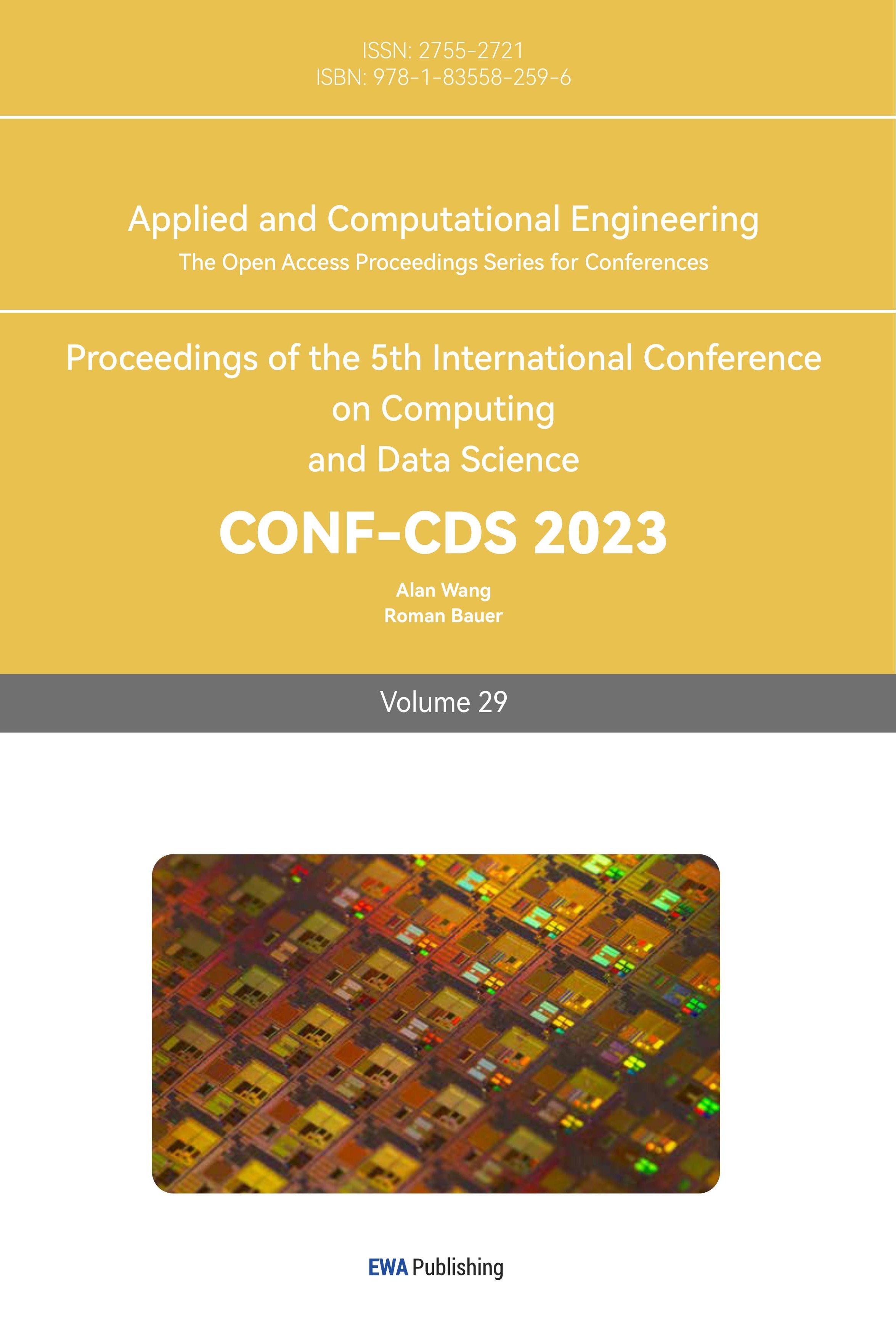References
[1]. Feng X, Feng X, Qin B. A survey on dialogue summarization: Recent advances and new frontiers. arXiv preprint arXiv:2107.03175. 2021 Jul 7.
[2]. Chen Y, Liu Y, Chen L, Zhang Y. DialogSum: A real-life scenario dialogue summarization dataset. arXiv preprint arXiv:2105.06762. 2021 May 14.
[3]. Zhu C, Liu Y, Mei J, Zeng M. MediaSum: A large-scale media interview dataset for dialogue summarization. arXiv preprint arXiv:2103.06410. 2021 Mar 11.
[4]. Zhang Y, Ni A, Yu T, Zhang R, Zhu C, Deb B, Celikyilmaz A, Awadallah AH, Radev D. An exploratory study on long dialogue summarization: What works and what's next. arXiv preprint arXiv:2109.04609. 2021 Sep 10.
[5]. Zhao, L., Xu, W., & Guo, J. (2020, December). Improving abstractive dialogue summarization with graph structures and topic words. In Proceedings of the 28th International Conference on Computational Linguistics (pp. 437-449).
[6]. Gliwa, B., Mochol, I., Biesek, M., & Wawer, A. (2019). SAMSum corpus: A human-annotated dialogue dataset for abstractive summarization. arXiv preprint arXiv:1911.12237.
[7]. Feng, X., Feng, X., Qin, L., Qin, B., & Liu, T. (2021). Language model as an annotator: Exploring DialoGPT for dialogue summarization. arXiv preprint arXiv:2105.12544.
[8]. Zhong, M., Da Y., Tao Y., Zaidi A., Mutuma M., Jha R., Awadallah A.H., Celikyilmaz A., Liu Y., Qiu X. Radev D. "QMSum: A new benchmark for query-based multi-domain meeting summarization." arXiv preprint arXiv:2104.05938 (2021).
[9]. Lewis M, Liu Y, Goyal N, Ghazvininejad M, Mohamed A, Levy O, Stoyanov V, Zettlemoyer L. Bart: Denoising sequence-to-sequence pre-training for natural language generation, translation, and comprehension. arXiv preprint arXiv:1910.13461. 2019 Oct 29.
[10]. Lundberg, C., Viñuela, L. S., & Biales, S. (2022, July). Dialogue Summarization using BART. In Proceedings of the 15th International Conference on Natural Language Generation: Generation Challenges (pp. 121-125).
[11]. Vaswani, A., Shazeer, N., Parmar, N., Uszkoreit, J., Jones, L., Gomez, A. N., Kaiser, Ł. & Polosukhin, I. (2017). Attention is all you need. Advances in neural information processing systems, 30.
Cite this article
Du,L. (2024). Query-Based Dialogue Summarization Using BART. Applied and Computational Engineering,29,160-166.
Data availability
The datasets used and/or analyzed during the current study will be available from the authors upon reasonable request.
Disclaimer/Publisher's Note
The statements, opinions and data contained in all publications are solely those of the individual author(s) and contributor(s) and not of EWA Publishing and/or the editor(s). EWA Publishing and/or the editor(s) disclaim responsibility for any injury to people or property resulting from any ideas, methods, instructions or products referred to in the content.
About volume
Volume title: Proceedings of the 5th International Conference on Computing and Data Science
© 2024 by the author(s). Licensee EWA Publishing, Oxford, UK. This article is an open access article distributed under the terms and
conditions of the Creative Commons Attribution (CC BY) license. Authors who
publish this series agree to the following terms:
1. Authors retain copyright and grant the series right of first publication with the work simultaneously licensed under a Creative Commons
Attribution License that allows others to share the work with an acknowledgment of the work's authorship and initial publication in this
series.
2. Authors are able to enter into separate, additional contractual arrangements for the non-exclusive distribution of the series's published
version of the work (e.g., post it to an institutional repository or publish it in a book), with an acknowledgment of its initial
publication in this series.
3. Authors are permitted and encouraged to post their work online (e.g., in institutional repositories or on their website) prior to and
during the submission process, as it can lead to productive exchanges, as well as earlier and greater citation of published work (See
Open access policy for details).
References
[1]. Feng X, Feng X, Qin B. A survey on dialogue summarization: Recent advances and new frontiers. arXiv preprint arXiv:2107.03175. 2021 Jul 7.
[2]. Chen Y, Liu Y, Chen L, Zhang Y. DialogSum: A real-life scenario dialogue summarization dataset. arXiv preprint arXiv:2105.06762. 2021 May 14.
[3]. Zhu C, Liu Y, Mei J, Zeng M. MediaSum: A large-scale media interview dataset for dialogue summarization. arXiv preprint arXiv:2103.06410. 2021 Mar 11.
[4]. Zhang Y, Ni A, Yu T, Zhang R, Zhu C, Deb B, Celikyilmaz A, Awadallah AH, Radev D. An exploratory study on long dialogue summarization: What works and what's next. arXiv preprint arXiv:2109.04609. 2021 Sep 10.
[5]. Zhao, L., Xu, W., & Guo, J. (2020, December). Improving abstractive dialogue summarization with graph structures and topic words. In Proceedings of the 28th International Conference on Computational Linguistics (pp. 437-449).
[6]. Gliwa, B., Mochol, I., Biesek, M., & Wawer, A. (2019). SAMSum corpus: A human-annotated dialogue dataset for abstractive summarization. arXiv preprint arXiv:1911.12237.
[7]. Feng, X., Feng, X., Qin, L., Qin, B., & Liu, T. (2021). Language model as an annotator: Exploring DialoGPT for dialogue summarization. arXiv preprint arXiv:2105.12544.
[8]. Zhong, M., Da Y., Tao Y., Zaidi A., Mutuma M., Jha R., Awadallah A.H., Celikyilmaz A., Liu Y., Qiu X. Radev D. "QMSum: A new benchmark for query-based multi-domain meeting summarization." arXiv preprint arXiv:2104.05938 (2021).
[9]. Lewis M, Liu Y, Goyal N, Ghazvininejad M, Mohamed A, Levy O, Stoyanov V, Zettlemoyer L. Bart: Denoising sequence-to-sequence pre-training for natural language generation, translation, and comprehension. arXiv preprint arXiv:1910.13461. 2019 Oct 29.
[10]. Lundberg, C., Viñuela, L. S., & Biales, S. (2022, July). Dialogue Summarization using BART. In Proceedings of the 15th International Conference on Natural Language Generation: Generation Challenges (pp. 121-125).
[11]. Vaswani, A., Shazeer, N., Parmar, N., Uszkoreit, J., Jones, L., Gomez, A. N., Kaiser, Ł. & Polosukhin, I. (2017). Attention is all you need. Advances in neural information processing systems, 30.









